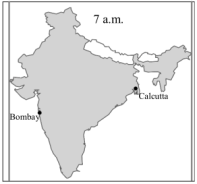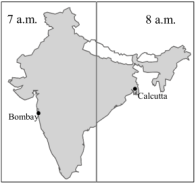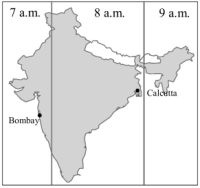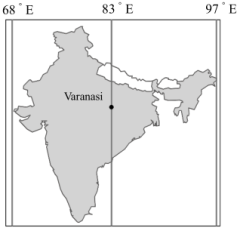1 . Falling birth rates are a major concern for some of Asia’s biggest economies. Government s in the region are spending hundreds of billions of dollars trying to reverse the trend. Will it work?
Japan began introducing policies to encourage couples to have more children in the 1990s. South Korea started doing the same in the 2000s, while Singapore’s first fertility (生育) policy dates back to 1987. China, which has seen its population fall for the first time in 60 years, recently joined the growing club.
While it is difficult to quantify exactly how much these policies have cost, South Korean President YoonSuk-yeol recently said his country had spent more than $200bn (£160bn) over the past 16 years on trying to boost the population. Yet last year South Korea broke its own record for the world’s lowest fertility rate, with the average number of babies expected per woman falling to 0.78. In neighbouring Japan, which had record low births of fewer than 800,000 last year, Prime Minister Fumio Kishida has promised to double the budget for child-related policies from 10tn yen ($74.7bn; £59.2bn).
Having a bigger population who can work and produce more goods and services leads to higher economic growth. And while a larger population can mean higher costs for governments, it can also result in bigger tax revenues (税收). Also, many Asian countries are ageing rapidly. Japan leads the pack with nearly 30% of its population now over the age of 65 and some other nations in the region are not far behind. Compare that with India, which has just overtaken China as the world’s most populous nation. More than a quarter of its people are between the age of 10 and 20, which gives its economy huge potential for growth. And when the share of the working age population gets smaller, the cost and burden of looking after the non-working population grow. “Negative population growth has an impact on the economy, and together with an ageing population, they won’t be able to afford to support the elderly,” said Xiujian Peng of Victoria University.
1. Which Asian country first took measures to increase population in this passage?| A.Japan. | B.South Korea. | C.Singapore. | D.China. |
| A.Japan hit the lowest record of new-born babies last year. |
| B.India has the largest and youngest population in the world. |
| C.China’s population has been decreasing in the recent 60 years. |
| D.South Korea had the lowest population record last year in the world. |
| A.The economy of India will overtake that of Japan. |
| B.Negative population growth leads to an ageing population. |
| C.The larger the population is, the better the economy will be. |
| D.A bigger share of working age population helps support the elderly. |
| A.Low birth rate is a negative factor for economy. |
| B.China is joining the countries of low birth rate. |
| C.Many Asian countries came to negative population growth. |
| D.Many Asian countries are trying all out to battle low birth rate. |
2 . Fergal Keane is a well-known BBC war reporter. His reporting helped his television audiences make sense of the horrors of war, but underneath there were more personal scars attracting him to the frontline.
Fergal had seen violence ever since the early days of his work covering the fighting in Belfast. Having reported wars all over the world, in 1994, he was sent to cover the civil war in Rwanda. But what Fergal saw there shocked him like nothing before, as he told BBC World Service programme, Lives Less Ordinary. “I began to have terrible dreams of Rwanda. And of course, at that stage, it was clear that I was mentally hurt. Did I go to the experts in hospital? No, I didn’t.”
Instead, Fergal turned to drinking alcohol and he had another addiction to deal with - the need to keep returning to war. Fergal knew it wasn’t healthy, but he couldn’t stop.
Around the year 2001, it seemed that war was everywhere, and Fergal kept on reporting - in Sudan, Iraq, Afghanistan, and Lebanon. But the nightmares didn’t stop, and his mental health got worse and worse. You might expect Fergal to call it a day at this point, but that’s not how addiction works. He just kept getting pulled back in. He reached a point where he couldn’t carry that anymore, and it’s not dramatic, it’s a slow, steady ruin. Fergal had a nervous breakdown - a period of dangerous mental illness, leaving him unable to face his life. At last, he was admitted into hospital, and this time diagnosed with post-traumatic stress disorder, PTSD - a mental illness experienced after violent or shocking events.
After his diagnosis of PTSD, he got support and was finally able to stay away from alcohol and war. In his new book, The Madness: A Memoir of War, Fear and PTSD, Fergal discusses his horrible life living with PTSD.
1. What caused Fergal’s illness?| A.The fighting he covered in Belfast. | B.The violence he saw in Rwanda. |
| C.The terrible dreams he had in Rwanda. | D.The wars he reported all over the world. |
| A.He got drunk and slept well. | B.He talked to the experts at once. |
| C.He told the audiences through BBC. | D.He abandoned himself to alcohol and the frontline. |
| A.To call for help. | B.To make phone calls one day. |
| C.To cry all day. | D.To put a stop to it. |
| A.Overwork can make a person mad. | B.Every experience ends in a book. |
| C.Wars are cruel and damaging. | D.Devotion to one’s job is respectable. |
3 . Six months ago, 28-year-old Danny Wallace, who earns his living as a TV comic and “ideas” man, had a great idea. What if he started his own country and invited anyone who wanted to join him to become a citizen? So, naming himself King Danny I and declaring his one-bedroom flat in East London an independent state, he set about taking the necessary steps to make his dream come true. He even documented his progress in his BBC2 series How To Start Your Own Country, which comes to the end of its six-week run on Wednesday.
Over the six weeks, Danny explored the possibilities of forming his own country. The first thing on his agenda was to hand in his Declaration of Independence to the prime minister. With this out of the way, he was free to start thinking about writing a constitution and setting up a government. Then he was off to design his own flag and record his own national anthem and even got someone to design possible postage stamps of his country, with his face on them!
The final thing Danny had to do was to find a name for his country. At his request, citizens sent in thousands of suggestions as to what this new country could be called. Ideas ranged from Flatland to Wallaceland! But, in the end, the final selection came down to just two: Home or Lovely. Aiming to become the most democratic democracy in the world where its citizens have the opportunity to enjoy equality, King Danny achieved a world first and let the people decide. Lovely finally stood out.
Whether the country will continue to grow will very much depend on how busy its creator is. And, as Danny Wallace is much in demand for several other TV projects, it might fall to other members of his government to keep things running. But with elections promised every six months, the creation of the University of Lovely and several sporting events planned over the coming weeks, there are plenty of activities to keep the citizens of Lovely occupied for quite a while yet.
1. What does Danny Wallace’s “great idea” in Paragraph 1 refer to?| A.Making a documentary. | B.Founding a new country. |
| C.Owning an independent state. | D.Choosing actors for a TV show. |
| A.Drafting a constitution. | B.Getting official approval. |
| C.Analyzing the possibilities. | D.Composing a national anthem. |
| A.Lovely beat Home in the final selection. |
| B.The world is created by ordinary people. |
| C.The citizens’ rights of a country are respected. |
| D.Lovely signals the successful rule of King Danny. |
| A.The future of Lovely. | B.The life of the citizens. |
| C.The daily routine of Danny Wallace. | D.The establishment of the University of Lovely. |
4 . “I have travelled the world for 25 years in search of trouble,” admits Dr David Nott in his recent autobiography, War Doctor: Surgery on the Front Line. “It is a kind of addiction, a pull I find hard to resist.” This pull has seen him use his surgical skills to help those in need by taking unpaid, month-long breaks from his “day job” as an NHS surgeon in the UK every year to work in conflict zones and disaster areas.
He first worked in Sarajevo in 1993 as a volunteer with the French charity Médecins Sans Froatières. The hospital be worked in had so many holes in its walls caused by bombing and sniper (狙击手) fire that it was called the “Swiss Cheese Hospital”. It was his first insight into the terrifying reality of treating patients in a war zone. The hospital suffered power cuts during operations and he and his team were regularly shot at.
But Nott found this exhilarating. “Going to Sarajevo, almost getting killed, I had never felt so wonderful. I really felt as though somebody bad injected me with something. I felt fantastic. I think to skirt death — and then to realize how close you are to death and that you survived it — is exciting. And that’s the experience I’ve had many times over.”
This attitude may seem reckless (鲁莽的), but it means that Nott has saved lives in desperate situations. In Gaza in 2014, he decided not to abandon a young girl in the middle of surgery despite being told that the hospital was about to be bombed. He carried on, no bombs fell and the girl survived. He has kept a photograph of them taken together three days later. In Yemen, he operated on the wife of a bomb-maker who had accidentally blown up his own house. Nott found a detonator (雷管) buried in her leg and bad to carefully dispose of it before continuing the operation.
1. What does the underlined word “It” in paragraph 1 refer to?| A.Travelling the world. | B.Working as a surgeon in a war zone. |
| C.Performing surgeries on his patients. | D.Taking month-long breaks from his day job. |
| A.In 1993. | B.In 2014. | C.In 2018. | D.In 2021. |
| A.The feeling of narrowly escaping death. | B.The thought of saving lives. |
| C.The improvement of his surgery skills. | D.The difficulty of working in desperate situations. |
| A.Modest and courageous. | B.Generous and strict. | C.Careless and aggressive. | D.Adventurous and selfless. |
5 . For decades, India’s time zone has been a hotly debated issue. Back in 1884 when time zones were officially established, two time zones were used — Bombay Time and Calcutta Time. Indian Standard Time (IST) was introduced in 1906, but Calcutta Time and Bombay Time continued to be maintained after
India’s independence in 1947, until 1948 and 1955 respectively. The current single time zone, though a legacy of British rule, is often viewed as a symbol of unity. Yet, not everyone thinks it is a good idea. India stretches 3,000 km from east to west, spanning roughly 30 degrees longitude. This corresponds to a two-hour difference in mean solar time, based on the position of the sun in the sky. Thus, the sun rises nearly two hours earlier in the east than in India’s far west. In Northeastern states, sunrise can be as early as 4 a.m. in summer and sunset by 4 p.m. in winter, much earlier than the official working hours. This results in great loss of daylight hours and more consumption of electricity, and often reduced productivity.
Meanwhile, recent studies point out that the current system leads to a serious problem in education for some students. Nationwide, the school day starts at roughly the same time; thus, children go to bed later and have reduced sleep in west India, where the sun sets later. Such sunset-induced sleep deprivation is more pronounced among the poor, mostly due to their noisy environment and lack of sleep-inducing facilities like window shades or indoor beds. On average, an hour’s delay in sunset time reduces children’s sleep by 30 minutes, and an hour’s delay in annual average sunset time reduces education by about 0.8 years. As a result, children living in locations with later sunsets are less likely to complete primary and middle school education.
Despite various requests and proposals for multiple time zones, the government is keen to retain the current system. Reasons provided include prevention of confusion and safety issues regarding railway and flight operations.
1. Which of the following illustrates the Indian time zone system since 1955?A. | B. |
C. | D. |
| A.Noisy. | B.Distant. | C.Flexible. | D.Outstanding. |
| A.The number of traffic accidents can be reduced. |
| B.Children may have better-quality sleep and education. |
| C.India may have more energy resources to generate electricity. |
| D.The country may rid itself of the impact of British colonization. |

| A.7 p.m. | B.6 p.m. | C.5 p.m. | D.4 p.m. |
Ukrainian officials say their forces struck Russia’s flagship in the Black Sea with missiles,
The Moksha is named for the Russian capital, Moscow. If the ship did sink, it would be
The news of the attack came
Ukrainian military advisers said the removal of the ship had great
Peru, a county
If you are to visit Peru, you may consider spending a day or two
So this is it—
Peru is a country on the Pacific coast of South America with three main areas:



